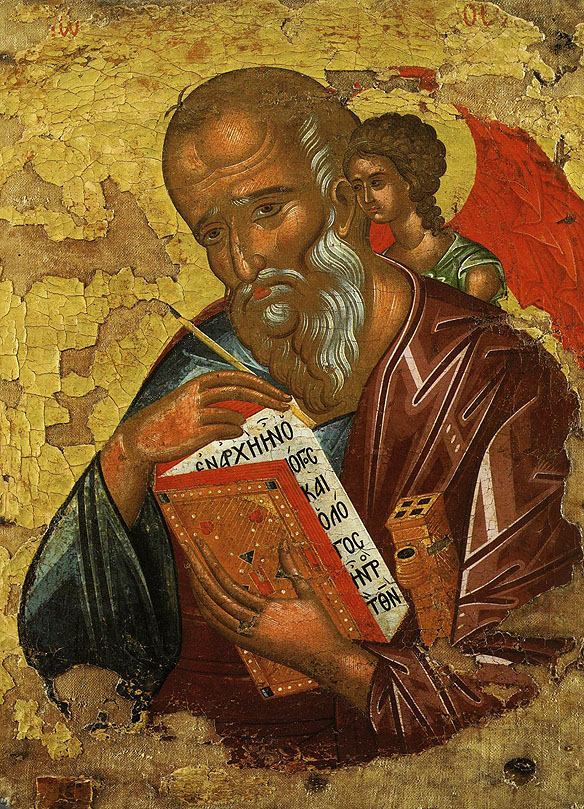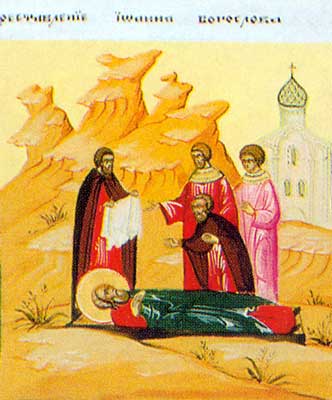 Every place of Orthodox worship is named after a royal feast, a feast of the Mother of God or a saint. This means that the churches are placed under the patronage of the saints who bear their name. The saint or the feast is called a Slavonic term, the hram, and the church receives it with the sanctification of the place on which it is to be built and especially with the occasion of the sanctification at the end of the construction works, service reserved to the bishop only.
Every place of Orthodox worship is named after a royal feast, a feast of the Mother of God or a saint. This means that the churches are placed under the patronage of the saints who bear their name. The saint or the feast is called a Slavonic term, the hram, and the church receives it with the sanctification of the place on which it is to be built and especially with the occasion of the sanctification at the end of the construction works, service reserved to the bishop only.
From the beginnings of Christianity, the faithful surrounded with love and reverence the heroes of faith, their saints. In the first centuries, when Christianity appeared as a new religion in the Roman Empire, was recorded the greatest number of martyrs. It was all who, having been grasped by the truths of Christ’s teaching, were given death by the conviction that through this are born in the new life, life in Christ. That is why the day of remembrance of the saints is not the one in which they were born, but the day they passed to the eternal, the day of their spiritual rebirth.
The Christians of the early ages of the Church, seeing the manhood and serenity with which the martyrs and martyrs defended their faith and received their death, nourished feelings of admiration and respect for these heroes of faith. They gathered and buried with care and piety the fleshly remains of those who died for Christ and gathered every year, on the day of their death, around the tombs, to mention them by performing the Holy Mass and by reading the acts of life, their passion. When Christianity began to develop in freedom, and the divine worship gained special significance, especially from the 4th century, Christians built the first churches on the tombs of martyrs and martyrs to keep their memories alive.
Later it was not possible for any place to be exalted on the tombs of saints and martyrs. Thus it was customary that any holy place be worshiped, dedicated or consecrated to a saint of the Church. As every Christian receives a holy name at baptism, as well a church, when sanctified by the bishop, receives the name of a saint in honor of whom it was built and who now patronizes and protects it. It is what we call the church’s patronage. The painting of the church is painted outdoors on the western façade of the worship place, and inside the iconostasis on the left of the Savior icon. Many churches have a main and a secondary play. Day is the greatest feast of the church and is celebrated with great fast and solemnity.
The patron saint of our church, the Apostle and Evangelist John, was the son of Salome, one of the myrrhbearing women, and Zevedeus, a fisherman from Bethsaida of Galilee. His brother was St. James, another apostle, both of whom are known as the sons of thunder. In his Gospel, he presents himself as Jesus’ beloved disciple rather than his name. John was the youngest of the twelve Apostles and very close to the Savior Christ. It is not known exactly about the life of Saint Apostle John, some writing that he lived 120 years, and another 105 years and seven months.
 When the saint’s service and life were fulfilled, he went with his seven disciples to a certain place near Ephesus. Being on the day, he told them to sit there, and he, as if to a stone’s throw, prayed. He then instructed the disciples to dig a grave in the image of the Cross, the length of its stature. Teaching and kissing them, he said, “Drawing the earth, my mother, cover me.” The disciples kissed him, covering him up to his knees. He kissed them, covered him up to the grumbs, and put on his face a scratch, and so, crying very loudly, then covered him completely. Hearing this, the Christians in the city came and uncovered the tomb, learned nothing. Since then, eight days of May, a graceful dust appears in his tomb, and many sick people receive healing with the prayer of Saint John the Apostle to God’s honor.
When the saint’s service and life were fulfilled, he went with his seven disciples to a certain place near Ephesus. Being on the day, he told them to sit there, and he, as if to a stone’s throw, prayed. He then instructed the disciples to dig a grave in the image of the Cross, the length of its stature. Teaching and kissing them, he said, “Drawing the earth, my mother, cover me.” The disciples kissed him, covering him up to his knees. He kissed them, covered him up to the grumbs, and put on his face a scratch, and so, crying very loudly, then covered him completely. Hearing this, the Christians in the city came and uncovered the tomb, learned nothing. Since then, eight days of May, a graceful dust appears in his tomb, and many sick people receive healing with the prayer of Saint John the Apostle to God’s honor.
